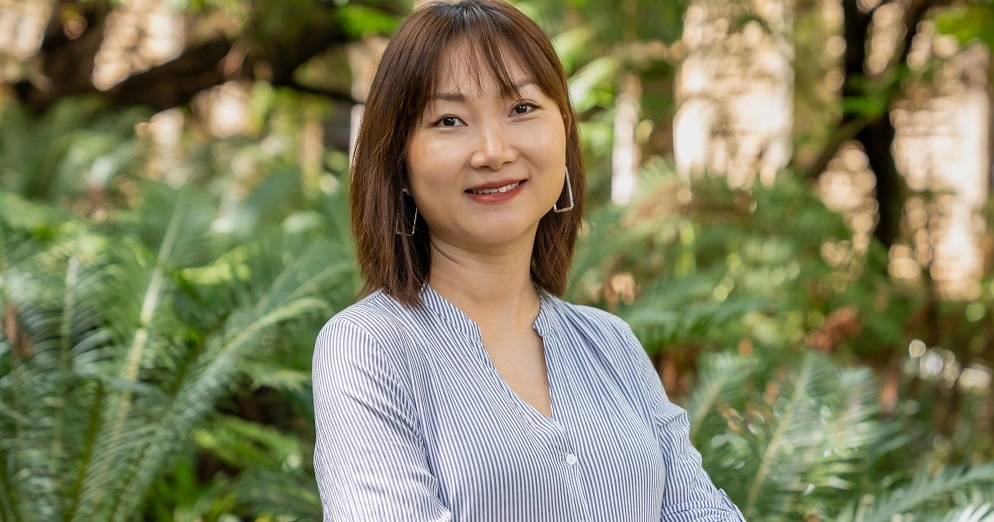Dr Qiaoyun Xie is a purist reformed. Not so long ago, the geospatial scientist and lecturer within The University of Western Australia’s School of Engineering hardly saw the value of sullying her plant research with something as non-traditional as artificial intelligence.
Today, though, she’s harnessing AI to go beyond academic theory: analysing vast amounts of satellite imagery of the world’s vegetation hotspots to accurately monitor the daily impacts of climate change.
“A few years ago, I actively repelled the idea,” Dr Xie says. “I was a believer in traditional plant biology and physiology theory – and I still am – but I thought that traditional theory had to be the main, if not only, way to study these things.”
 Image: Dr Qiaoyun Xie.
Image: Dr Qiaoyun Xie.
“But by the time I graduated with my PhD, everything had shifted and I could see how powerful AI could be in my field. It’s literally been a game-changer for my research. I think that AI really helps in complex areas like climate change where it basically bypasses the assumptions we scientists make when we set up equations and instead draws analysis and questions from the data itself.”
Dr Xie’s research uses satellite imagery, or what she describes as her ‘eyes in the sky’, along with field measurements, to track the dynamics of ecosystems. She looks at vegetative colour, seasonal change, leaf growth, ground coverage and plant interactions with climate to capture evidence of variability – information that, on a scale enabled by AI, can help predict the future impacts of climate change and inform mitigation strategies.
Since moving to UWA from The University of Technology Sydney in May last year, Dr Xie has been working with the WA Department of Biodiversity, Conservation and Attractions to study drought and heat resilience within the State’s jarrah forests, as well as partnering with the WA Agricultural Research Collaboration to monitor the impact of climate change on our extensive rangelands. She says the opportunity for meaningful industry engagement was a major part of the appeal of moving to UWA.
“I don’t want to just publish papers,” Dr Xie says. “I want my findings and conclusions to be used by decision-makers because the issues at stake are compelling. The (climate) changes are happening and they’re happening faster than we think, so we need to move now to adapt to those changes.”
Another UWA academic using AI to produce research with impact is Jake Kendrick. Currently completing his PhD in Medical Physics at UWA, Mr Kendrick’s ongoing project is centred on the development of an automated segmentation framework for metastatic prostate lesions.
“In a nutshell, I trained an AI model to analyse hundreds of PET scans (an imaging test used to diagnose where disease exists in the body) and automatically identify where the disease sites were,” he explains. “For a radiologist to do the same, to look at those scans individually and physically circle disease sites, would take a very, very long time. The model I developed was capable of doing that fully automatically without any radiologist intervention and I was able to show that tumour volume was actually prognostic for overall survival.”
Mr Kendrick’s research, which was published in the European Journal of Nuclear Medicine and Molecular Imaging, will now be extended and refined to ultimately develop a fully validated AI model suitable for clinical practice.
“I believe we’ll see that in the next two years,” he says, “and my goal is that the model will be available to everyone via open source software. That will mean we can turbo-charge the analysis of these images because everyone will be able to segment those scans and that makes it much easier to conduct research to identify which features are predictive of patient response.
“Overall, what we want to do is be able to predict whether people are going to respond to certain treatments in advance and therefore provide them with the optimal treatment pathways because once prostate cancer spreads to other parts of the body, the five-year survival rates are very poor. We want to give people the best chance of survival.”
The research carried out by Dr Xie and Mr Kendrick has been supported by the UWA Data Institute, which was established two years ago to help transform data science research.
Industry Engagement Manager Julianne Sparke says the Institute is rapidly transforming the data science landscape in WA and providing industry and government with clearer pathways to tap into UWA’s data science expertise.
“We’re creating fresh opportunities to address real-world challenges in transforming a vast volume of diverse types of data into meaningful knowledge,” Ms Sparke says. “It’s about making data ‘talk’ so that it can help solve problems.”
The UWA Data Institute’s Foundation Sponsors are BCG X and IMDEX Limited.
Media references
Annelies Gartner (UWA Media Advisor) 08 6488 6876
